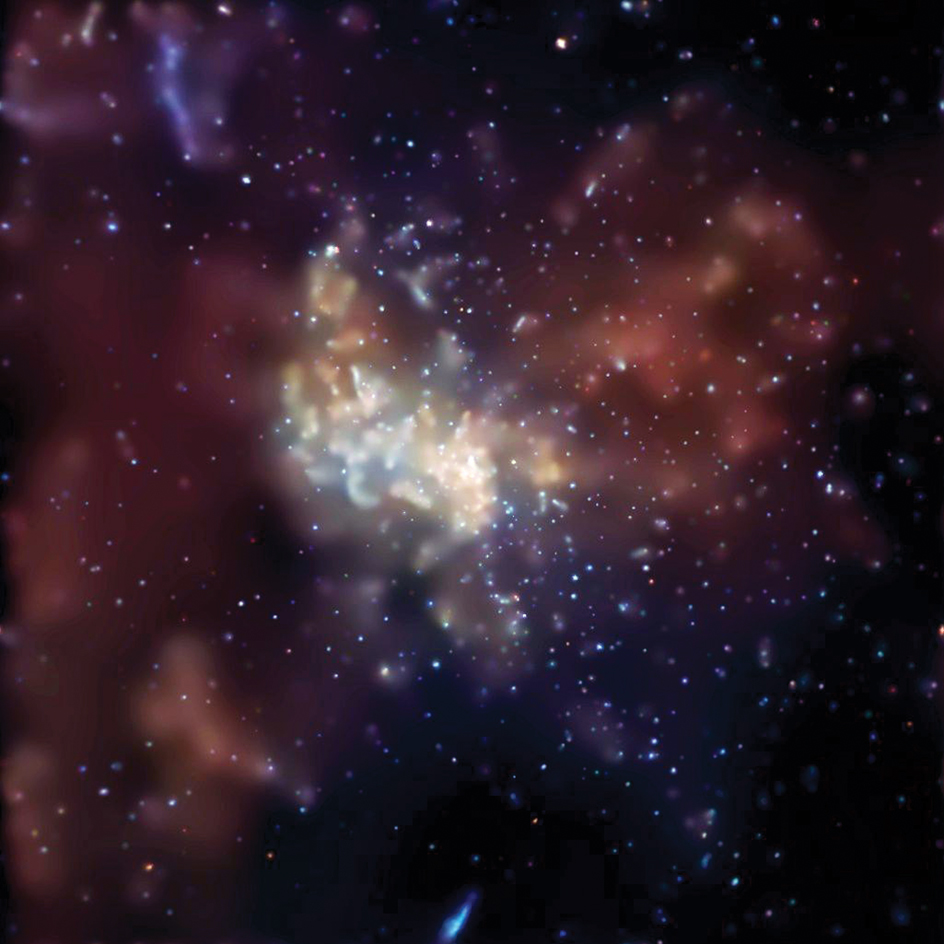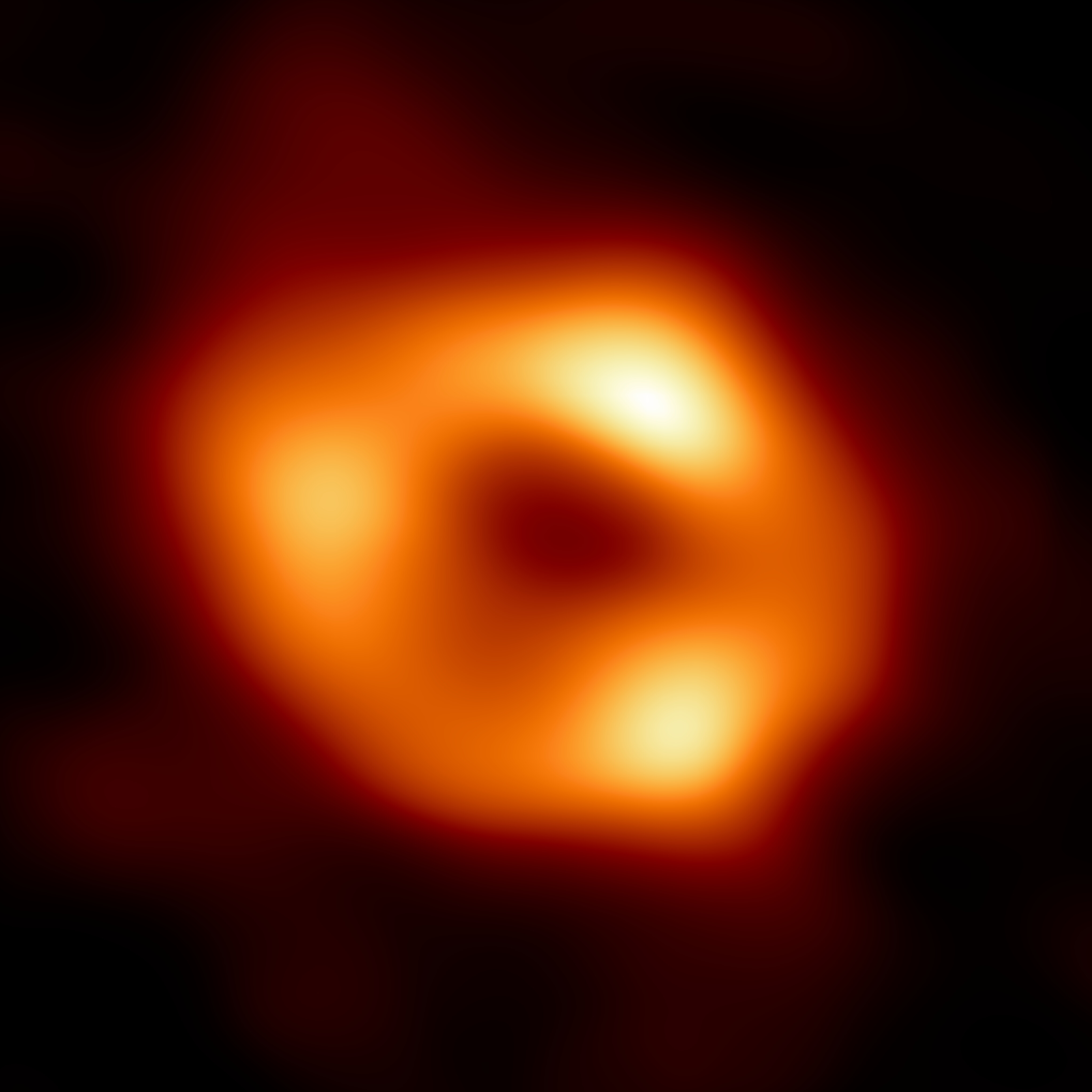Sagittarius A* << saj uh TAIR ee uhs AY star >> is the name given to a source of powerful radio waves located at the center of the Milky Way, our home galaxy. Sagittarius A* is the site of a supermassive black hole. A black hole is an object in space with a gravitational force so strong that nothing—not even light—can escape it. A supermassive black hole is such an object with a mass from about 1 million to billions of times the mass of the sun.
The American engineer Karl Jansky discovered a source of radio waves in 1931 as he investigated static interference in transatlantic radio messages. Jansky determined that the radio waves came from a celestial source outside the solar system, from the direction of the constellation Sagittarius. Astronomers designated this source of radio waves as Sagittarius A (abbreviated SgrA).

Astronomers later determined that the radio waves originated beyond the constellation, from a source at the center of the Milky Way, about 26,000 light-years from Earth. A light-year is the distance that light travels in a vacuum in a year—about 5.88 trillion miles (9.46 trillion kilometers). From Earth, astronomers cannot see the object producing the radio waves, because visible light from the center of the galaxy is blocked by vast amounts of dust and gas. However, radio waves, infrared (heat) rays, and X rays pass readily through dust and gas. Astronomers can use these electromagnetic waves to create images of the celestial objects that produce them.
In 1982, astronomers detected a particularly bright point within the radio source. The radio waves were created by high-energy electrons moving at nearly the speed of light within strong magnetic fields. Light travels 186,282 miles (299,792 kilometers) per second. Astronomers renamed the radio-wave source Sagittarius A* (abbreviated as SgrA*) because the nature of the source emitting (sending out) the radio waves seemed analogous to atoms in excited (high energy) states. Scientists designate sources in such excited states with an asterisk.
It is impossible to observe a black hole directly in visible light. However, astronomers can confirm a black hole’s existence from its effect on gas, dust, and stars surrounding it. Over many years, astronomers observed stars orbiting SgrA* at high speed—more than 2 percent of the speed of light. Astronomers can calculate the size and mass of an object by measuring the speed of any objects orbiting it, by using mathematical principles developed by the English scientist Isaac Newton. Astronomers calculated that SgrA* was an object with a mass from 3.6 million to 4.3 million times that of the sun. However, this mass was contained within a volume about the size of Mercury’s orbit around the sun. Astronomers concluded that only a supermassive black hole could have so much mass contained within such a small volume.

In 2018, astronomers using the Very Large Telescope in Chile measured the movement of clouds of gas orbiting closely around SgrA*. The gas clouds were found to be moving at about 30 percent of the speed of light. At such incredible velocity, magnetic interactions among charged particles in the orbiting gas clouds emit powerful radio waves and X rays. The interactions create bright flares of radio waves and X rays that shoot into space. These observations match predictions made by the German-born physicist Albert Einstein about the conditions surrounding a black hole, confirming that such an object exists at the center of our galaxy. Astronomers now understand that most, if not all, spiral galaxies like the Milky Way have a supermassive black hole at their center.
A technique known as radio interferometry can produce images of the region around a black hole called the event horizon. This technique works best with the use of many radio telescope dishes spread out over long distances. The telescopes, considered as a unit, are called a radio interferometer, and the longest distance between dishes is the interferometer’s baseline. In 2017, astronomers began using the Event Horizon Telescope (EHT) to make observations of SgrA*. The EHT is an international collaboration of radio telescope observatories linked together to create an Earth-sized interferometer. In 2022, EHT scientists released the first image of the event horizon of SgrA*. 
